Where to go when
Hi all
I saw Jon’s post re lesser known mammal spots (my personal favourite is Pico, Azores – probably one of the best cetacean watching places on the planet)… Currently locked-down, I was thinking of the list of places that I want to visit in the world for mammal-watching – a list which seems to grow rather than shrink owing to the brilliant reports that keep on being posted here. With that list and this community in mind, I thought we could start to compile a “where-to-go-when” list. The hope would be that we think about a few countries and in time come up with quite a long list of the best times to go to each place. I would then be happy to also convert this into a look-up guide, allowing people to go from available dates to places, as well places to best times. To get the ball rolling, I thought I would ask about a few of the places that are definitely on my “to visit” list, and we can go from there.
So they are:
Madagascar
Ethiopia
Gambia
Chile
Baffin Island
Sri Lanka
Vietnam
If you have any suggestions for the best times in these countries/best times for particular sites within them, then please post below. I guess we’ll see how things go, and then hopefully move on to some more countries in a week or so!
Thank you!!
Ben
18 Comments
-
-
Jon Hall
THanks Ben – this is a good idea. It would indeed be useful to have advice for each country. I can then eventually create some sort of summary list.
For Chile then the high desert and patagonia are best in the southern summer. Chiloe Island is also good then but I imagine has a less extreme climate.
Baffin Island: the floe edge is popping in early June with just about all the specialty mammals. Once the ice melts then Narwhals are around June-August I believe.
-
Paul Carter
Hi Ben. I keep an excel version of this but it is one of my scrappier projects. Best to separate some countries into geographic areas of course e.g. I have 6 rows for Vietnam. I list zones by row and fill cells with comment re temp / rainfall, especially typhoon / local tourism etc. I colour blocks red or green based on good/bad to travel. eg cell entries for 3 SE Asia countries below
VIETNAM tourism row I have cell entries:
End Jan, Early Feb very busy – for Tet (local new year festival)
April-May – Recommended
July-Aug – Domestic tourist crowds
Oct – Recommended
VIETNAM Regional includes:
For Vietnam north of Nah Trang I have NE Monsoon for Oct-Mar
Vietnam Lowlands = hot, humid for April-Sep
Vietnam North and Central – July-Nov – typhoons possible
Vietnam South from Nah Trang: May-Oct=Afternoon downpours; Nov-Feb=Drier, slightly cooler; Mar-Apr=DryCAMBODIA:
Jan-Feb – Dry
Mar-Apr – Dry, Hot, most humid
May – Wet, Hot
June-Aug- Wet, Hot
Sep – Wet
Oct-Nov – Dry, CoolLAOS:
Jan-Feb -Dry
Mar-Apr – Dry, Hot
May-June – Wet, Hot
July-Sep – Wet
Oct-Dec – DryThailand best weather-wise Nov – Feb but Dec-Jan busiest for tourists
-
Paul Carter
For Madagascar I just plotted rainfall averages for certain areas e.g.
Tana rain in mm for Jan-Dec =
340 300 200 60 20 20 20 20 20 80 140 300
Source
https://weather-and-climate.com/average-monthly-Rainfall-Temperature-Sunshine,antananarivo,Madagascar -
-
Vladimir Dinets
I actually found Austral spring to be better for Chile. The central part is blooming and mammal activity is much higher; in the south you have to deal with cold winds but small mammals are also very active.
In Madagascar, Austral winter (particularly July-August) is out because many mammals hibernate and the country is overrun by European tourists. November is excellent: many mammals have babies and thorn forests are blooming. May-early June are a bit cold in the highlands, but bird and small mammal numbers are the highest in many places. -
Jeff Higdon
When it comes to Baffin Island, most people think floe edge trips in north Baffin, usually based out of Pond Inlet (Mittimatalik). As Jon noted, trips there in late May and early June can provide the full complement of expected species, with narwhal spring migration being the main draw. If seeing narwhal is your priority, then a north Baffin floe edge tour is likely your best bet. You can also see good numbers there in the open-water season (August-September), when the Eclipse Sound narwhal stock is summering in Milne Inlet and Tremblay Sound.
It’s possible to get bowhead whales and the occasional walrus at the north Baffin floe edge, but if those species are a priority you’re better to go to Foxe Basin, on the southwest side of Baffin Island, “above” Hudson Bay. The Foxe Basin floe edge is the place to be for bowhead whales, and it has the largest Atlantic walrus population in Canada. You’d be based out of the community of Igloolik/Iglulik, which is on Iglulik Island and not actually on Baffin Island (but close by…). The likelihood of seeing narwhal is much, much lower here though. For bowhead whales along the floe edge, late June to early July – it’s a nursery area and the whales stick around until break-up allows them to migrate through Fury and Hecla Strait into the Gulf of Boothia to stay with the ice. The main areas for walruses are south of the floe edge, but hunters will launch boats from the ice edge and go look for them among the floating pack ice. By mid-July the floe edge has broken up. Still good for walruses at that point, but many of the bowheads will have continued on by then.
To summarize – north Baffin floe edge in late May/early June for narwhal, Foxe Basin in late June/early July for bowhead whales and Atlantic walruses.
Another option, while not Baffin Island, is Naujaat (formerly Repulse Bay) in northwest Hudson Bay. I think it’s the best place in Nunavut to have a chance at all the typical marine mammals for the region. Best bet for seeing more species is during the open-water season (ca. August), but you can do floe edge trips there too during the spring narwhal migration (early June).
Jeff Higdon
-
flothj
Hello fellow mammals and mammal watchters
I have very little free time during the year and happen to have from the 11th until the end of January 2024 off. I am a seasoned mammal watcher (33 year old veterinarian) and i have travelled a lot. Is anyone doing a trip at this time and wouldnt mind a likeminded fellow mammal watcher joining?
Also any tipps for places to go in Janaury? I am based in Spain (have seen most of what there is here).Any help or advice would be much appreciated.
John
-
Jon Hall
Hi John – have you thought about the Westerm Sahara. That is an easy trip from Spain and also something you can do independently (lots of reports on my site). I would also suggest you make your own new post about your plans to get more visibility. Maybe you could suggest 2 or 3 places you are interested in visiting. Right now I would suggest Namibia, Sri Lanka, Oman and Argentina as places that might be popular in January but there are so many!
-
Paul Collins
Hi John, I regularly organise trips to Italy’s Apennines for Apennine Wolf, Marsican Brown Bear and Apennine Chamois, and over the last several autumns and winters have observed many rare behaviours on each trip (I have assisted also BBC, ‘Planet Earth II’ and other teams with finding these animals, so we have a very good success rate). If this is of interest to you next winter or autumn, get in touch at paulalistaircollins@gmail.com .
-
Leave a Reply
You must be logged in to post a comment.


Clive R Barlow
Hi. Could likely assist in The Gambia for a a research type visit for e.g. w af manatee .&/or co operative work with DPWM with trail cams for remaining hyeana / clawless otter / bat work / acoustics etc . what specifics on anything else can i help with ?
Bws
Clive R Barlow
Birds of The Gambia est 1984